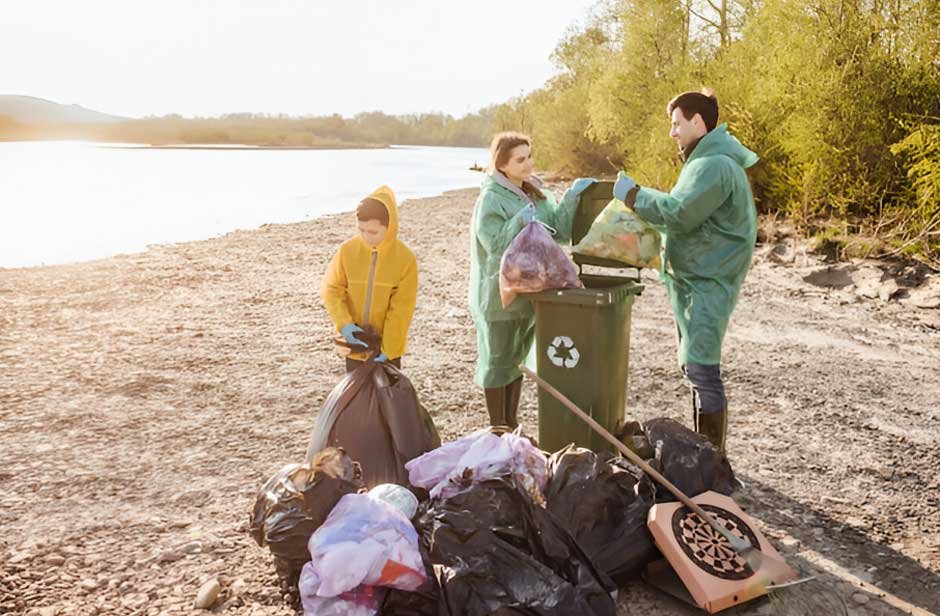Waste collection and recycling are easy-sounding ideas but are overflowing with myths. What goes into what container to how recycling operates, misconceptions abound, and expensive. They can destroy good intentions and ruin the whole waste management system. We sift through facts and fiction here to help you make better, cleaner, and greener choices at home.
Not Everything That Looks Recyclable Is
One of the biggest myths is that all items made of plastic, metal, and paper can be recycled. Unfortunately, most of the so-called recyclable items, for example, greasy pizza cartons, black plastic packaging, or crisp packets, aren’t collected at all. Operations such as local skips for hire prefer to remind customers to sort waste painstakingly because one misplaced item can pollute the whole batch and send it to the landfill unnecessarily.
Containers Must Be Spotlessly Clean
Most people assume that they need to scrub the whole can and wash the whole yoghurt pot until it shines. This is inefficient and wasteful of water. In practice, a quick wash or scratch to clean off the food bits will do. The recycling centres can manage infinitesimal messes but not excessive contamination, such as full jars of sauce or greasy containers, which can taint the entire load.
Recycling Symbols Mean It’s Recyclable
All those small triangle stamps on packages can get confusing. Having the ‘recycling’ logo does not necessarily mean your council will take it. The triangle number is a code for the type of plastic, not whether it can be recycled. Some plastics, such as PET and HDPE, are more commonly accepted, but there are some that are not. Not surprising then that so many get it wrong. Learning about local collection policies is much more helpful than relying on packaging, particularly if companies label with more marketing than sense.
Black Bin Bags and Black Plastic Are Fine
Think your black bin bags are a neat solution? Don’t be sure. Optical sorters at most recycling plants do not identify black material, so black plastics and bin bags therefore still end up at landfill even when they contain clean, reusable material. Worse still, some plants will not open black bags on grounds of health and safety. So all your sorting could be for nothing just because it is contained in a black bag. Rather, use transparent or clear bags, as they are a better and more eco-friendly option.
Waste-to-Energy Is Just Another Form of Recycling
Some people think that waste burning to make energy is recycling. It will not. Waste-to-energy burning will conserve landfill space and produce electricity, but also material for recycling along with that. Recycling recycles the old material as a new one, while burning them will simply burn them. And yes, energy is recovered, but so are carbon emissions. To be dishonest and counterproductive about treating it as a panacea is simply not true. Real sustainability is doing things again and minimizing waste first, and not burning what remains and labeling it as progress.
Compostable Items Belong in the Recycling Bin
Due to eco-labelling, people have gotten it into their heads that compostable packaging, plates, and cups go into plastics or paper recyclables. They are designed to decompose under certain composting conditions, not your kerbside recycling stream. If put in the wrong bin, they will taint whole loads, spoiling the quality of what can properly be recycled. Always read the label, and where practicable to compost it, it is better to put it in a green waste bin if you have one.
If It’s Recyclable, It Will Definitely Be Recycled
Most of us are innocent optimists that assume that whatever you recycle will be dealt with. Sadly, this is not the case. Materials get diverted back because they are contaminated, because they’re sorted in the wrong bin, or simply because there’s not a demand in the market. Recycling is reliant upon clean segregation, plant capacity, and demand. So yes, sorting it into the right bin is half the story; it’s not a recycling guarantee.
Recycling Alone Is Enough to Save the Environment
Recycling is helpful, but it’s no saviour. Recycling collects the rubbish later, rather than never making the mess in the first place. Over reliance on recycling excuses consumers and companies from changing their behaviour, provoking excess consumption and excess production. The real target must be to reduce waste in the first instance, buy less, use more, and make wiser choices. Recycling is an afterthought, not a forethought, in a truly sustainable lifestyle.
Conclusion
Myths surrounding garbage and recycling can create well-intentioned errors that hurt more than they heal by mistake. From believing all plastic products are recyclable to depending too greatly on recycling itself, it is simple to err. But knowledge is mighty. When you understand better, you sort better, and that one change can make a difference, bin by bin.
